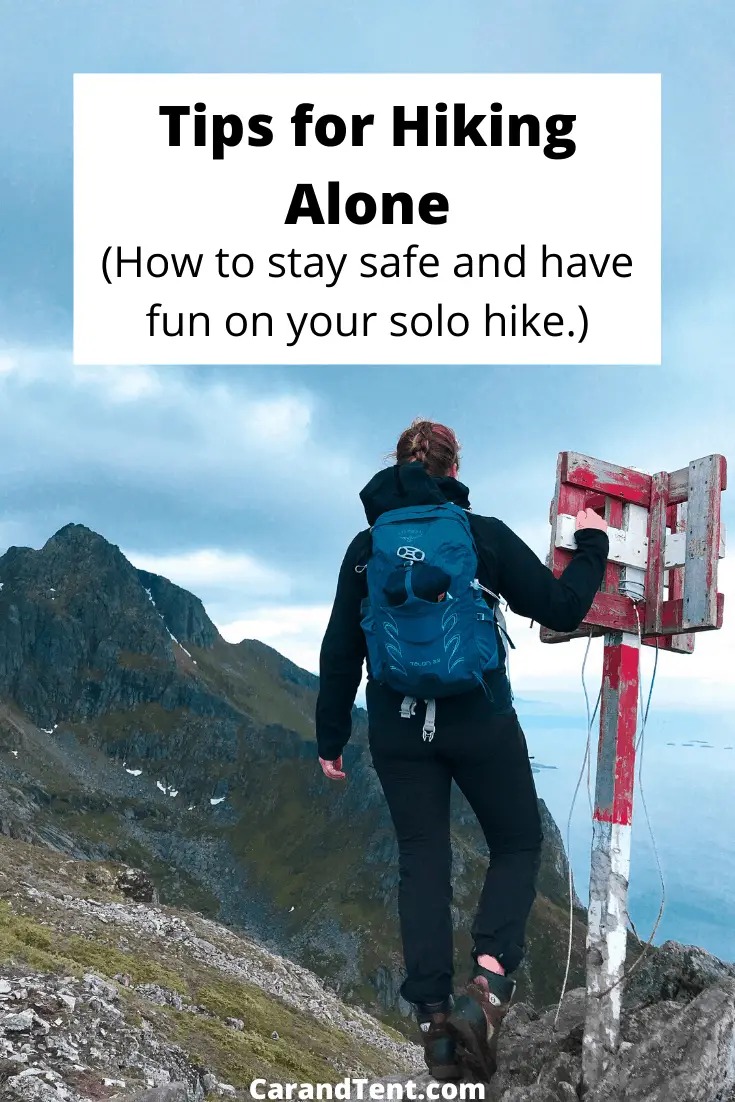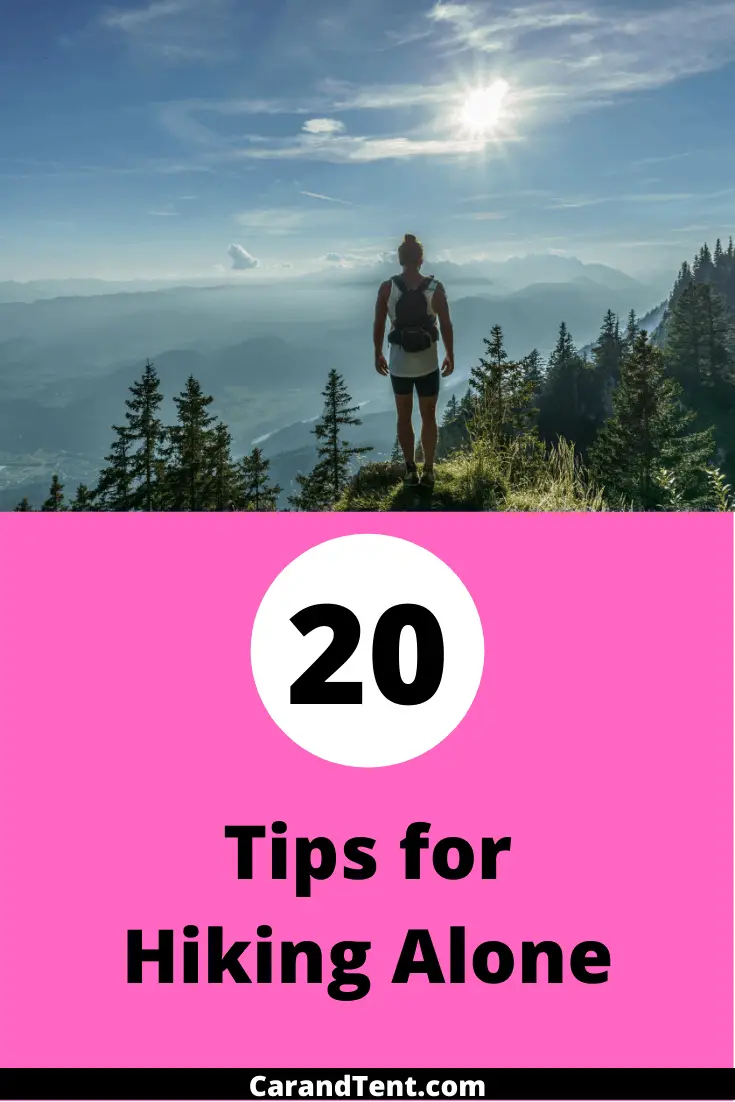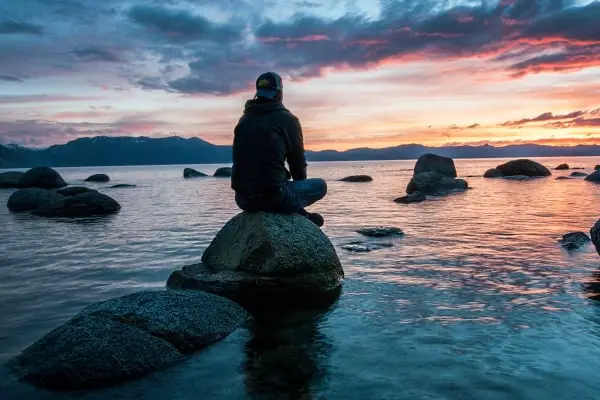
Hiking alone can be very liberating. You get to go where you want when you want, and you don’t have to make any compromises because of someone else.
The drawback, of course, is that you miss out on companionship and you don’t have a buddy to help you out should you get into trouble. There really is such a thing as safety in numbers and while solo hiking, you’ll only have number 1 to take care of you.
This being said, I’d highly recommend you go on at least a few solo hikes. Here are my tips for having fun and staying safe while doing so.
Table of Contents
Take Time to Plan
As I mentioned earlier, solo hikers get to go wherever they want whenever they want. This can lead to a lot of spontaneity. Spontaneity is fun, but it can also lead to a complete lack of planning which is dangerous.
Instead of being completely spontaneous, it’s better to plan out your trip. This is especially true if you’re going on a longer hike or a hike through unfamiliar territory.
Plan your hike out in great detail and be happy that you don’t have to work around someone else’s schedule, likes, and dislikes. Also, make your plans knowing that you can change these plans at any time before your trip without having to worry about canceling on anyone.
All of this planning will pay off in a few different ways. For starters, you’ll know what to pack and you’ll know what time you need to leave. Secondly, you’ll be able to tell others where you’re going so that someone can come to your rescue if you don’t return.
Hike Familiar Trails
Another tip I’d highly recommend is to hike trails that you’re already familiar with. Remember, a solo hike feels much different than a hike with someone else so you’ll still get a unique experience even if you’re hiking on trails you’ve been on dozens of times before.
Also, when you hike a familiar trail, you’ll be able to plan your route out better. You’ll also have a good sense of whether or not the area is safe. On top of this, you won’t have to worry about the additional stress of getting lost or not being able to find the parking lot.
Learn About The Area
If you’re going to solo hike in an area that you’re not familiar with, you’d be wise to find out as much about the area as possible. Research the area online and use Google street view to see the trailheads and the areas surrounding the trailheads. This will make it easier to find parking and will help to ensure that you end up in the right place.
Finding out as much about the area as possible may also help you to avoid areas that aren’t safe. For example, you may discover that the violent crime rate is high on or near a particular trail. When you find a place like this, skip over it and save it for a time when you’ll have other people to go hiking with.
Hike Busy Trails
You don’t always have to hike with a group to get the safety benefits of hiking with other people. Hike a busy trail and you’ll have people hiking by you at regular intervals. These people might not be there to keep you company but they could be very helpful in the event that you become injured or lost.
I’ve never had the misfortune of getting hurt or lost on a trail but I’ve come across many strangers who weren’t quite sure of where they were. These people asked me for directions and I cheerfully gave them. In fact, I’ve even given complete strangers extra trail maps and I’m sure many people would do the same for you and me.
Go hiking on a trail that isn’t frequented very often and you won’t have these advantages. Also, if you fall and lose consciousness while alone on an empty trail, you may not be found in time to save your life.
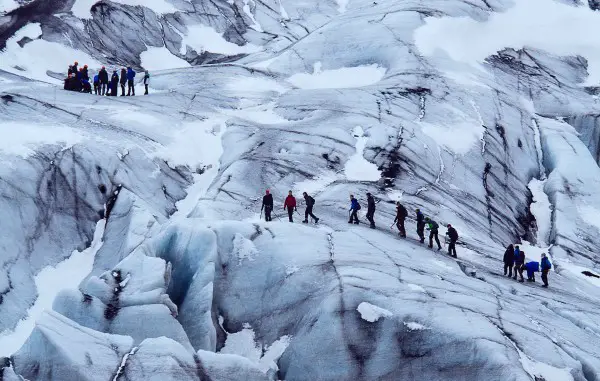
Let Someone Know Where You’re Going
You can take every other precaution I’ve mentioned in this post and you could still end up lost or injured in the woods, in the desert, or at the bottom of a mountain. When you don’t show up for work, somebody will probably notice and hopefully, somebody will want to go look for you.
Unfortunately, if you haven’t told anybody where you were going, nobody will think to check the hiking trails. Ideally, you’ll be able to contact a local ranger station before heading out and you’ll ask them to look for you if you don’t check back in by a certain time. Failing this, however, you can still create a situation where you can get help if you don’t make it back.
Just tell a friend or family member where you’re headed and ask them to call the local authorities if you don’t check back in with them by a certain day or time. Taking this step will dramatically increase the chances that you’ll be found in the event you’re lost or too injured to make it back.
Take a Shorter Trip
The shorter your trip, the less time there will be for things to go wrong. Also, shorter hikes don’t go as deeply into the wilderness as longer ones tend to do.
If you’re solo hiking through the woods, you’ll be more likely to run into other people the closer to the trailhead you are. This means that if you fall and get knocked unconscious, there is a higher likelihood that someone will come upon you in time to give you assistance.
Also, you may find that a short hike is all you need when you’re alone. You may think you need to get away for an entire day but a few hours of solitude may be all you need to clear your mind and experience nature.
Pack a Day Pack
I always recommend that you pack a day pack whenever you go hiking. A day pack can help you carry items to make the day more enjoyable. Examples of this might be your camera, some snacks, and a sports drink. On top of this, a day pack can help you bring a few extra items that you might need in an emergency.
Items like hand warmers, emergency blankets, flashlights, knives, and bandages can help you get through many situations that you might not have survived. Not only this, but they give you the ability to help others that may be in need of assistance.
For more information on what to bring on a day hike, check out my post titled, “What to Wear and What to Bring On A Day Hike“.
Don’t Wear Head Phones
Headphones are great for the treadmill, the track, and even for walking around the gym. I’ve put headphones in without even turning music on while walking around the gym just to keep people from talking to me and interrupting my workout.
This being said, I never wear headphones while hiking. For one, it defeats the purpose of getting away from it all. I mean, how can you enjoy the solitude of a solo hike when you have music blaring in your ears. But this isn’t the real reason that I never wear headphones while solo hiking.
I leave the headphones at home because I want to be able to use all of my senses to keep me safe. For example, how can I hear the tree that is starting to come crashing down behind me if I have headphones in? How can I hear the angry bear making sounds of distress next to me if my music is playing?
Leave the headphones at home and you’ll have an easier time keeping yourself safe. Not only this, but you’ll probably have a better and more relaxing hike as well.

Be Prepared to Leave Quickly
Whether you’re hiking alone or with someone else, it is always good to be prepared to leave quickly. The weather can change, a bear or mountain lion could show up, a stranger on the trail could give you a bad feeling, or a wildfire could break out.
Knowing where you are at all times and being prepared to leave quickly will help you get away from any bad situations before they become worse. This means you should have transportation available or you should have an alternate way to get home after you reach the trailhead.
Do you have somebody picking you up further along the trail at a certain time or day? If so, can they pick you up early if need be? These are thoughts you need to keep in mind when you’re planning out your solo hike. It would be a shame to get off the hiking trail quickly only to find that you’re stuck alone in a dangerous situation at a trailhead.
Bring Bear Spray
Go on a few hundred hikes without ever seeing a bear and you might decide you really don’t need bear spray after all. However, the one day when you do finally run into a bear, you’ll really wish you had it with you.
Bears can be dangerous when hiking in general, but they’re especially dangerous when you’re hiking alone. This is true for two reasons. For starters, a bear or other wild animal is much more likely to attack a solo hiker versus a hiker that is part of a group.
When you’re solo hiking you’ll be an easier target for large predators and you’ll have fewer eyes and ears to watch out for predators as well. On top of this, when you hike with other people, you’re likely to make more noise. The more noise you make while hiking, the less likely it is for you to accidentally startle a bear or mountain lion. Surprised animals can quickly become frightened and they are much more likely to attack than the ones that heard you a mile away and decided to move along well before you ever got to their position.
Additionally, when you’re attacked while solo hiking, you don’t have anyone else with you to fight off the attack or to call for help. Bring bear spray on your solo hike and hopefully, you won’t have to worry about needing someone to call for help.
Take Your Cell Phone
You might think that solo hiking is all about solitude and that bringing your cell phone will ruin this great opportunity for peace and quiet. If you’re one of these people, take your phone anyway and put it on silent so that nobody can disturb you.
Having your cell phone with you will give you the opportunity to call for help and to look up trail locations. It may also serve to help people figure out your last known whereabouts on the off-chance that your hike does not go as planned. In fact, many hikers have been rescued because rescue crews were able to narrow down their search to the area that the hiker was most likely to be lost in.
Remember, being found one day or even one hour earlier could mean the difference between life and death so it’s important to give rescue crews all of the help that they can get.
Bring a Trail Map
Trails can change quickly and when you’re out exercising and enjoying nature it can be easy to lose yourself in your own mind. Unfortunately, it can also be easy to get lost.
Bring a good trail map and you’ll be much less likely to get lost. Also, like my article on hiking in the rain says, bring a protective covering for your trail map so that you can use it even if you get trapped in a downpour.
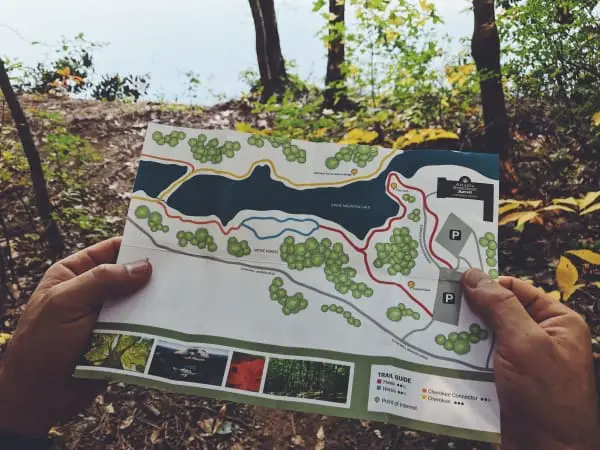
Consider a Hiking GPS
If you intend on hiking unfamiliar trails, you may want to consider getting a good hiking GPS. These GPS systems work much better than the navigational systems in a cell phone and they can often provide accurate routes within 3 feet. In the event that you lose track of where you are on your trail map, a hiking GPS can be used to help you find your way back to the trail.
Also, hiking GPS systems are great for people who find themselves suddenly off the trail. For example, a hiker recently fell off the side of a mountain in Arizona.
The way this hiker fell left him relatively unhurt but he was completely lost and could not find his way back to the trail. Luckily, rescuers did a helicopter search and they did end up finding him.
Unfortunately, it took them over a week before they did. When they did find him he was dehydrated and so weak that he had to be carried out of the wilderness.
If this hiker had brought a hiking GPS with him, he may have been able to find his way back to the trail without any help. In this instance, the cost of the GPS system would have easily outweighed the cost of missing a week of work as well as the medical bills that are sure to follow after his ordeal.
Be Friendly But Not Too Trusting
Solo hiking can often make it easier to meet other people while out on the trail. Just keep in mind that not everyone has the best of intentions.
When you meet other hikers on the trail, you may want to consider just how much information you share with them. Some people might find the fact that you’re hiking solo as a good opportunity to prey on you. They might wish to take your gear, do you harm, or simply break into your vehicle while you’re happily hiking the day away.
This doesn’t mean you can’t say hello or be friendly while hiking. In fact, it doesn’t mean you have to keep yourself from making new friends while hiking either. It just means that you may not want to let strangers know that you’re hiking alone, where you’re going, what you have with you, or even what type of vehicle you have parked at the trailhead.
Take Your Dog With You
Just because you’re friends won’t go hiking with you doesn’t mean your dog won’t. Dogs make great hiking and camping companions for a lot of reasons.
For starters, they’re up for going wherever you go whenever you want them to go. On top of this, they never complain.
A dog can provide you with company and protect you from danger while you complete your solo hike. (Is it really solo hiking if you have your dog?) I’m unsure of this, but I am sure that taking your dog with you while you hike can be a great experience.
Bring a Camera
One of the great parts about solo hiking is that you can stop whenever and wherever you want to stop. This makes solo hiking a great opportunity for taking pictures.
Bring your camera along and show your friends and family members all the great places you went to without them. Just don’t show them too many or you might not ever get to go for a solo hike again.
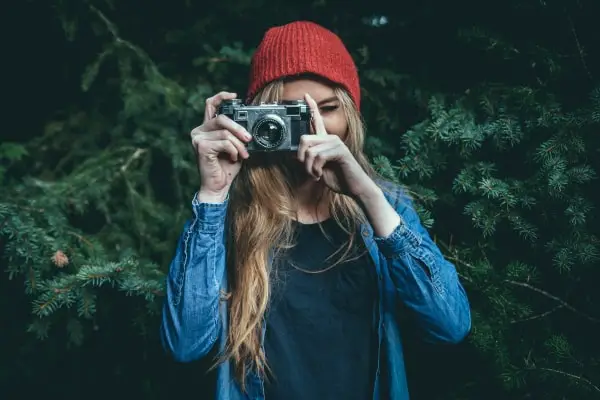
Bring a Field Guide
Ever walk by an animal, plant, or tree while hiking and wonder what it is? I know I have and I always tell myself that the next time I pass one I’ll take a picture of it so that I can Google it later.
My hike always ends without the picture ever being taken and I’m left to wonder what I saw. This is especially true when I’m hiking with others and I don’t have time to stop and take a picture or to even ponder what I’m seeing.
In fact, I notice that I see a lot less in general when hiking with other people. This could be because animals are more likely to hide or most likely it is just that I’m not as engaged with my surroundings when I’m with other people.
Recently, I bought a field guide that I keep in my day pack. Any time I’m especially curious about something I see while hiking, I just stop somewhere and look it up. While this doesn’t make me any better at hiking, it is interesting and I feel happy that I’m learning something new each time I hit the trails.
Take Breaks
In the past, I neglected to take breaks when hiking alone. I’m not sure if it was that I thought I’d be bored or that I thought it would be awkward, (kind of like eating at a restaurant alone). Either way, I started taking breaks by myself a few years ago and found that it made my solo hikes even more fun.
When you’re hiking alone you get to take a break whenever you want. You also get to get up and go again whenever you want. Why not take advantage of this benefit?
Pack Food and Water
This kind of ties in with the last tip. I used to come back hungry from my solo hikes and because I wouldn’t want to stop to eat somewhere, I’d end up getting something from a convenience store or fast food place. After a while, it just seemed silly to follow a healthy hiking trip up with a trip to a heart attack shack.
I find that the best way to avoid this whole issue is to just pack a meal with me. I’ll either pack healthy snacks that fit into my backpack or I’ll put a nice sandwich into a cooler so that I’ll have something good to eat when I get back to my car. On top of this, I keep a ton of extra water in my car which just saves me from having to stop to buy a $2.00 bottle of water on my way back home.
Go Alone With a Group
Have you ever gone to a party alone? You’re going to be with people you don’t know and you won’t be bringing a friend with you but you aren’t exactly solo. Once you get there, you often meet new people and you end up having a great time.
You can have a similar experience with hiking by joining a meetup group. There are many different hiking groups all over the country, so the next time you want to go hiking with people, but find yourself alone, consider finding a meetup group.
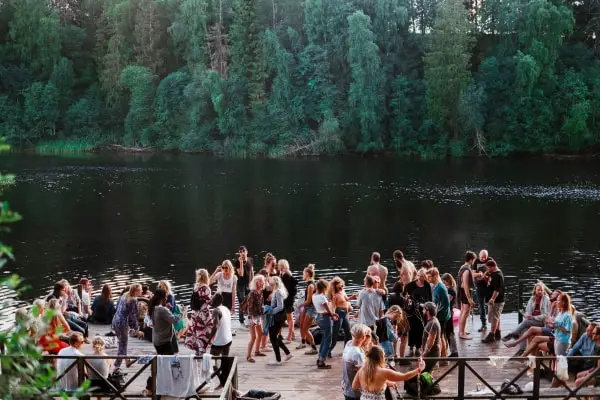
Final thoughts
Solo hiking is a wonderful experience that I think everyone ought to get to enjoy. The only caveat is that it can be a little less safe so it is important that you take a few extra precautions. Just take your time and be a little more cautious than usual and you’re sure to have fun without having to rely on someone else.

